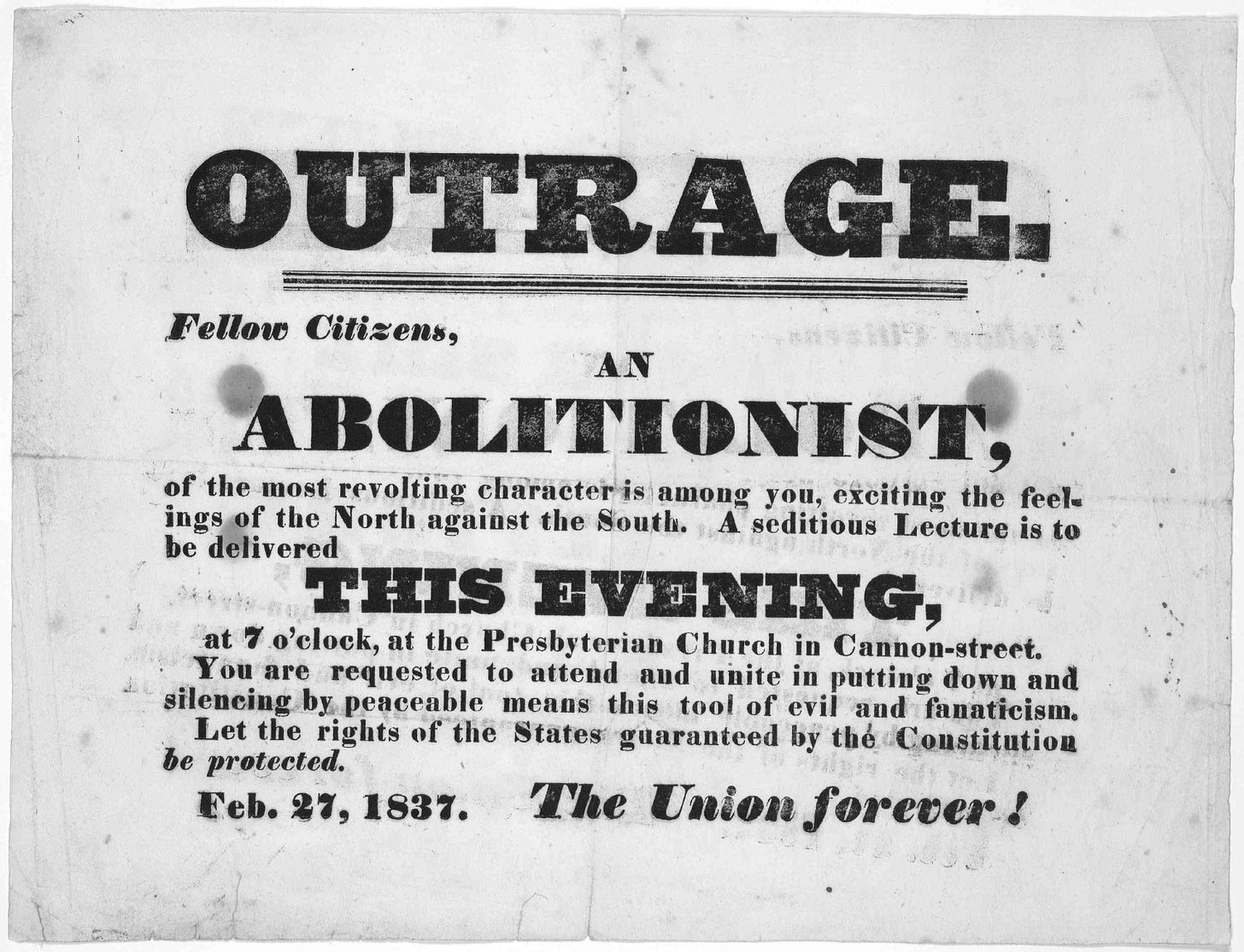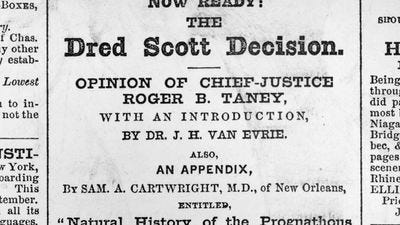By Robbin Warner
Since the election, some mornings I feel the weight of the political situation is insurmountable. What helps me move through my frozen despair is knowing that our nation has been in dire times before and survived.
In her 2022 book, The Color of Abolition: How a Printer, a Prophet, and a Contessa Moved a Nation, social movement scholar Linda Hirshman suggests that the challenges Abolitionists faced in the mid-1800s are similar to the challenges we face today. Given that the movement began in 1831 and did not see abolition until 1865, the Abolitionists’ persistence is something we can both admire and learn from.
Hirshman compiled a playbook of the Abolitionist’s Seven Core Principles of Organizing. I suggest we in the grassroots claim this list as our roadmap for surviving and outlasting what Hirshman calls “a constitutionally protected, retrograde, ignorant, bucolic force.”
Examining the fundamental similarities between what the Abolitionists faced and what we face today gives me perspective, fortitude, and most importantly, hope that we too will prevail. I offer a snapshot of the Abolitionist playbook below as a path forward in these darkest of times.
I. Ideas — and publishing them — matter
The rise of the Abolitionist movement coincided with the invention of the steam powered printing press that made printing faster and cheaper. Abolitionists made good use of these presses, and when the telegraph came in 1840, they used that, too. Although Abolitionists had newspapers shut down and presses destroyed, more sprung up in their wake. Getting their ideas out by using the communication media of their day was essential to the abolitionists.
The first lesson, then, is to capitalize on the dominant media of the day. Just as the Abolitionists used the steam press, we must constantly look for ways to get our message out by finding nimble and innovative ways to use current media technology.
2. Weekly meetings build solidarity
Taking their cue from the church, the Abolitionists recognized that you build solidarity by meeting regularly. Their weekly meetings helped form and grow communities built on trust, belonging, and common understanding.
The second lesson: regularly scheduled meetings, events, and connections give people a way and reason to belong.
3. Talk and knock, far and wide
Talking to people directly is important. The Abolitionists set up a lecture corps, called The 70, people sent out to preach the anti-slavery message. Taking their role model from the evangelical movement, whose preachers stayed in towns until a critical mass had converted, Abolitionist evangelists stayed until many were converted to the cause.
Abolitionists also understood the importance of hearing from people who resemble them. For example, women spoke with other women during the daytime, when men were at work. Women talked to other women at kitchen tables, presenting petitions to abolish the slave trade. Women who signed on often converted their families, including husbands and brothers who could vote when women could not.
This is a big lesson with two parts: 1) Talk to people where they are; and 2) It’s best if people hear from people who resemble them.
4. Make injustice visible
Because they understood that injustice is widely unpopular, Abolitionists made sure their cause was contantly in front of the public. Along with preaching and printing, they took to the streets in protest. The more visible the injustice, the more unpopular.
This lesson: Get outside our bubbles and make sure that injustice is seen by all.
5. Get control of the Supreme Court
The Supreme Court back then, like the Supreme Court today, was not the neutral body the founders envisioned. In its notorious 1857 Dred Scott decision, the Court thought it was giving a green light to slavery, but the consequences were just the opposite. Although the heated rhetoric of nonpersonhood is Dred Scott’s most dramatic legacy, the threat of the slave empire imposing a “Slavocracy” on the rest of the country really fueled the Republican Party’s rise and the election of Abraham Lincoln. Pushing back against the Supreme Court, the Republican Party gained the majority in Congress and added a tenth judge which ended the court’s pro-slavery stance. The Supreme Court had thought it was dousing abolition when it, in fact, its actions triggered a reaction that ultimately led to the abolitionist’s victory.
This lesson: If you don’t have control of the Supreme Court, figure out how to use its decisions against it.
6. Don’t be intimidated
Like today’s right, supporters of slavery dominated the landscape during much of abolition. Many were extremely violent, but abolitionists didn’t back down. Hirshman tells of Abolitionist Maria Weston Chapman who looked around as they were attacking her meeting and said, “If we have to die for freedom somewhere, it might as well be here.”
The lesson is to stand strong and not let threats or violence deter support of the cause.
7. Never give up
Abolition is one of the rare, truly inter-racial movements in American history. The alliance forming this movement included racists, sexists and people up and down the socio-economic ladder. It was a complicated, messy, and volatile alliance. Some of its most well known figures like Frederick Douglass stepped away. Yet the movement continued.
Hirshman reminds us that the fight to end slavery took a long, long time but they persisted.
The next time the weight of today’s politics weighs heavy on your shoulders remember that the Abolition movement ultimately succeeded and we can make it through these dark times too.
To fully appreciate the depth and layered brilliance of those that fought to abolish slavery, read The Color of Abolition or a summary in this article. Sadly, Linda Hirshman is no longer with us. If you would like to hear her talk about how the abolitionists succeeded, you can watch her March 21, 2022 interview on Friday Power Lunch with new commentary by Finale Norton, click here.








